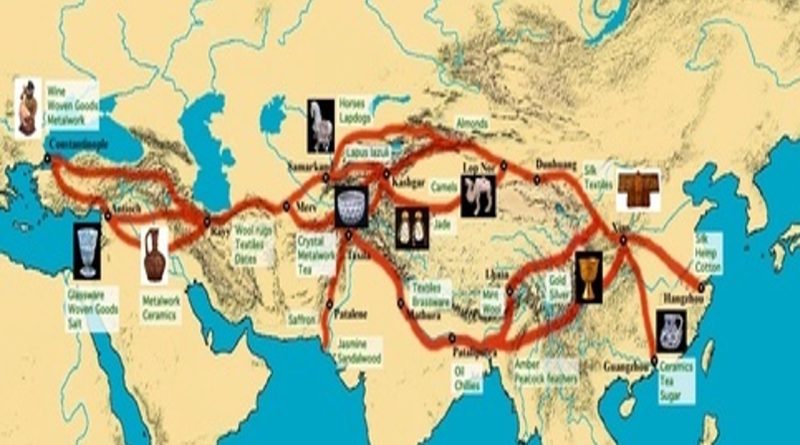GT Road : An Ancient Trade Route And A Modern Heritage | History Of GT Road
GT Road, also known as Grand Trunk Road, is one of the oldest and longest roads in South Asia. It is a historic trade route that stretches from Chittagong in Bangladesh to Kabul in Afghanistan, covering a distance of over 2,500 km. The road is named after Sher Shah Suri, the 16th-century Afghan king who built much of the road.
History Of GT Road
The GT Road is one of the most significant routes in the Indian subcontinent and has been a key artery of trade and commerce for centuries. It passes through several important cities and towns, including Kolkata, Delhi, Amritsar, and Lahore, connecting the eastern and northern parts of the Indian subcontinent with the northwestern regions of South Asia. The road has played a crucial role in the economic and cultural development of the region and continues to be a vital transportation link even today.
The road was originally built for military and trade purposes and was used as a major route for the transportation of goods, troops, and supplies between different parts of the Mughal Empire. During British rule, the road was further improved and expanded, and it played a crucial role in the economic development of the region. The road has been an important transportation route for goods and people, connecting the major cities and towns of the Indian subcontinent with the rest of South Asia.
GT Road in British India
In modern times, the GT Road has undergone several improvements and renovations. The road has been widened, straightened, and strengthened, and several bridges and bypasses have been built to reduce congestion and improve the flow of traffic. The Indian government has also undertaken several initiatives to improve the infrastructure along the GT Road, including the construction of new rest areas, petrol pumps, and food joints.
Despite the improvements, the GT Road continues to be a challenging route for travelers. The road is often congested with heavy traffic, particularly in the major cities, and there are still many stretches that are in poor condition and need to be upgraded. However, the road remains an important transportation link for the region and continues to be a major contributor to the economic development of the Indian subcontinent.
Impact of GT Road in South Asia
In conclusion, the GT Road is a historic trade route that has played a crucial role in the economic and cultural development of South Asia. It is a vital transportation link that connects the major cities and towns of the Indian subcontinent with the rest of South Asia and continues to be an important contributor to the region’s economy. Despite the challenges, the road remains a significant and enduring legacy of the region’s rich cultural and economic heritage.
GT Road: An Ancient Trade Route and A Modern Heritage
Introduction
The Grand Trunk Road (GT Road) is one of the oldest and longest roads in South Asia, connecting the eastern and western parts of the Indian subcontinent. It has played a crucial role in trade, cultural exchange, and historical events for over two millennia. Originally established during ancient times, it has evolved into a modern highway while retaining its historical significance.
Ancient Origins and Development
The origins of GT Road date back to the Maurya Empire (322–185 BCE) when Emperor Chandragupta Maurya and his advisor Chanakya developed a network of roads to facilitate trade and governance. Later, Emperor Ashoka expanded these roads, marking the beginning of a significant trade route linking India with Central Asia.
During the 16th century, the Afghan ruler Sher Shah Suri rebuilt and expanded the road, making it a well-structured highway from Sonargaon (now in Bangladesh) to Peshawar (now in Pakistan). He introduced milestones, rest houses (sarais), and improved security, ensuring smooth travel for traders, travelers, and armies.
Mughal and British Influence
The Mughal emperors further improved GT Road, using it as a primary route for administration and trade. The road facilitated the movement of goods, ideas, and people, strengthening the empire’s economy and cultural diversity.
During British rule, the road was modernized with better infrastructure, making it a key transportation route. The British extended it to connect Calcutta (Kolkata) with Peshawar, enhancing trade and administration.
GT Road in Modern Times
Today, GT Road forms part of India’s National Highway system (NH-1 and NH-2), linking major cities like Kolkata, Delhi, and Amritsar. It remains an essential route for trade, tourism, and daily transportation. Despite modern highways replacing some sections, GT Road’s historical milestones, ancient bridges, and old rest houses still stand as reminders of its rich heritage.
Cultural and Economic Significance
GT Road has influenced various aspects of South Asian culture, including literature, architecture, and cuisine. It has been a witness to countless historical events, from battles to cultural exchanges, shaping the region’s history.
Economically, GT Road continues to support commerce, connecting industrial hubs and facilitating trade between India, Pakistan, and beyond.
Conclusion
The Grand Trunk Road is more than just a highway; it is a living monument of history and progress. From ancient traders to modern travelers, GT Road remains a symbol of connectivity, endurance, and heritage. Its historical relevance and continued importance make it a testament to the evolution of transportation and civilization in South Asia.

